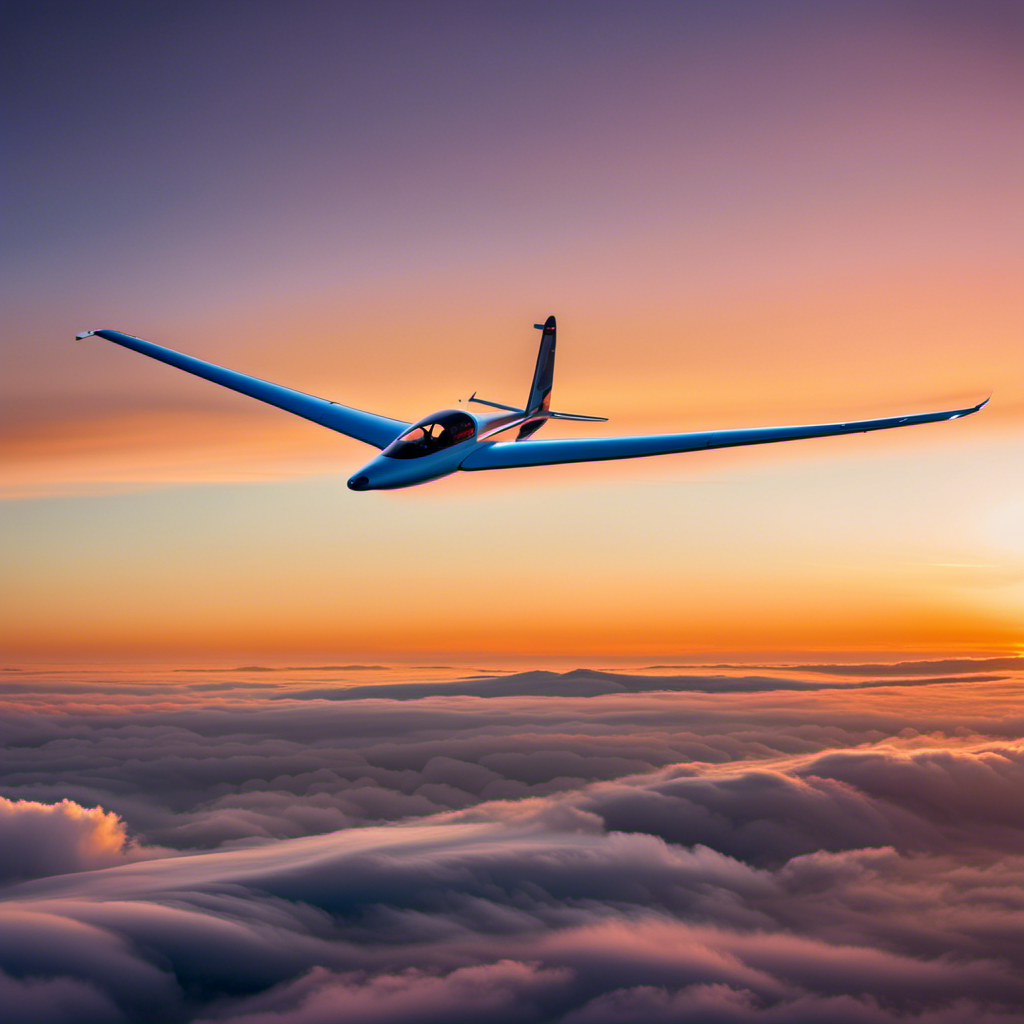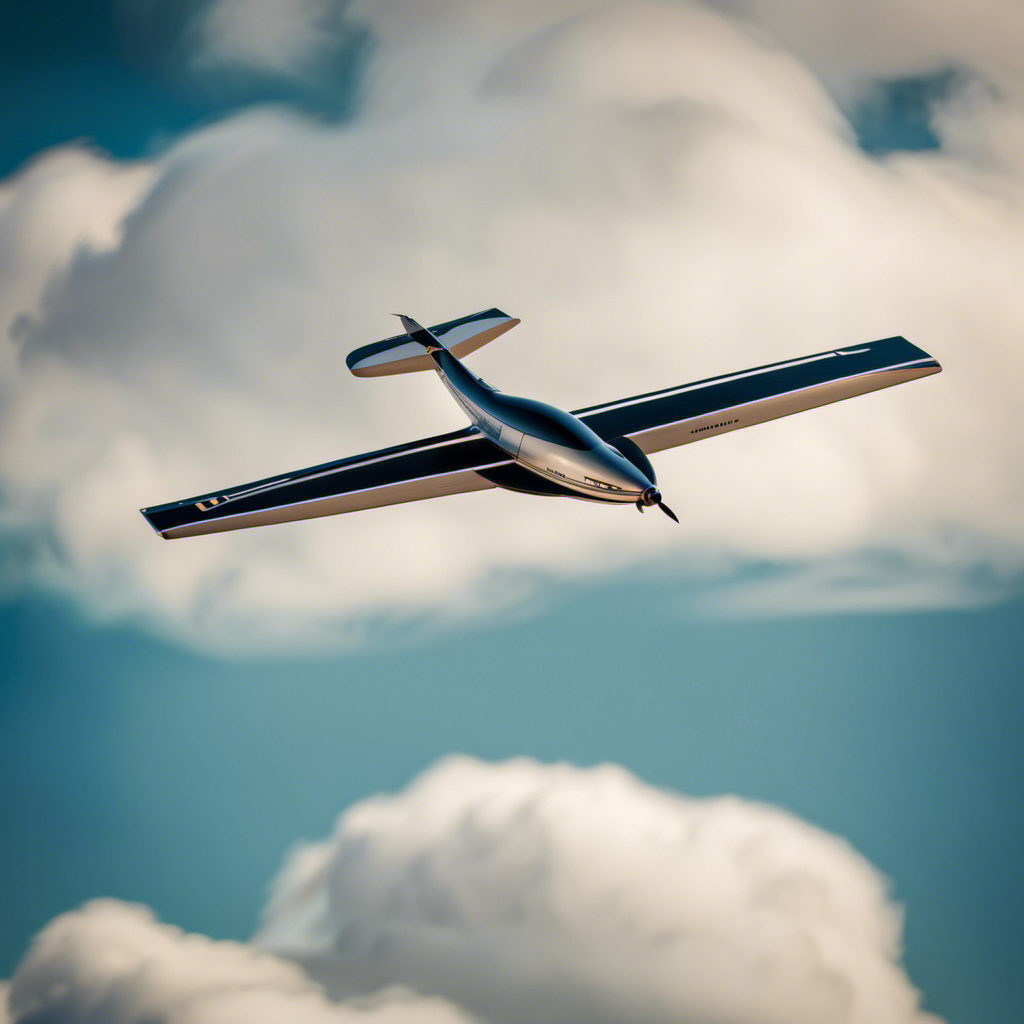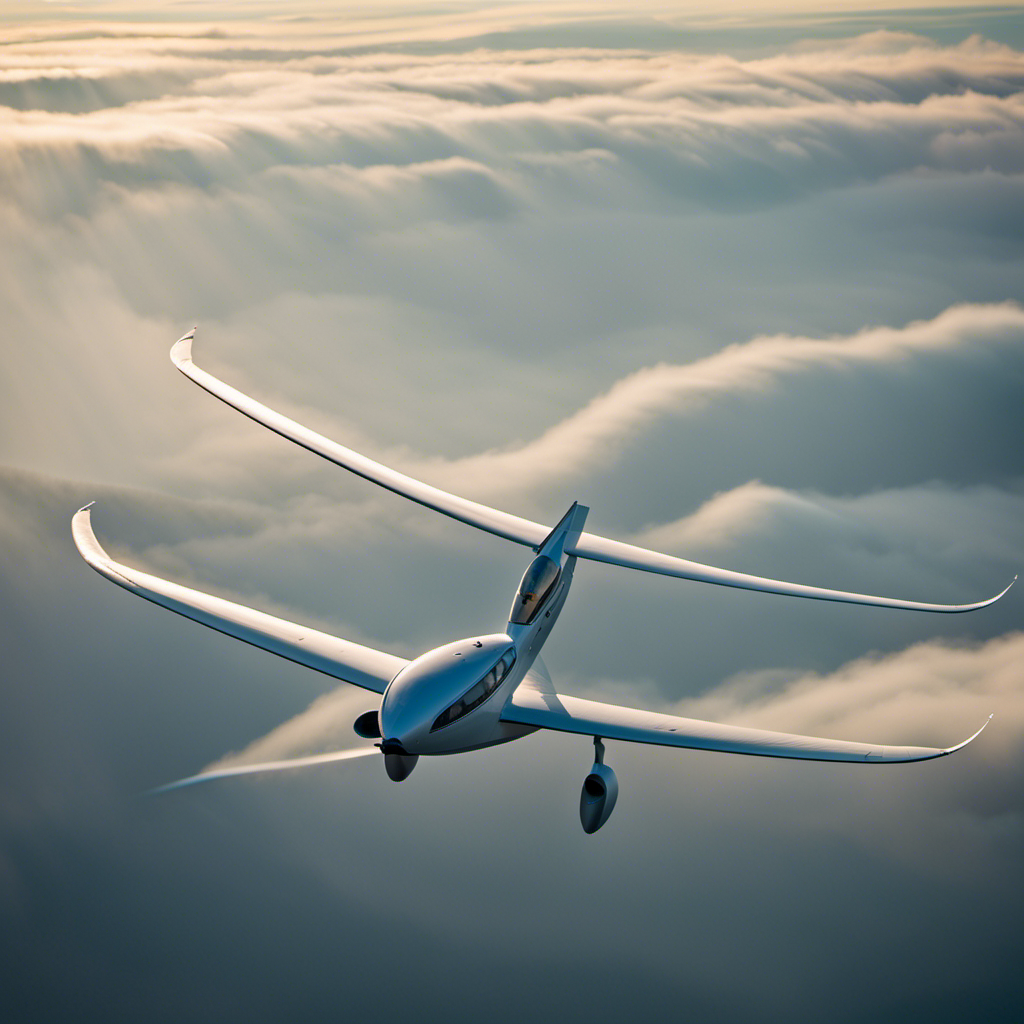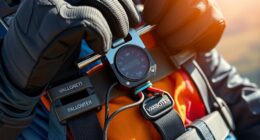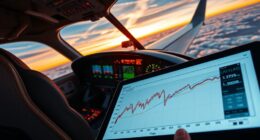I have always been fascinated by the idea of gracefully gliding through the sky, soaring effortlessly on the gentle currents of air. So, you can imagine my excitement when I found out about the world of glider flying.
Becoming a glider pilot isn’t just about sitting back and enjoying the ride; it takes dedication, training, and a thirst for knowledge.
In this article, I’ll walk you through the essential steps to becoming a glider pilot, from understanding the basics to obtaining your license and joining the vibrant gliding community.
So, let’s dive in and explore what it takes to soar gracefully among the clouds.
Key Takeaways
- Meeting license requirements through skill development and proficiency in glider operation is essential for becoming a glider pilot.
- Obtaining medical certification and ensuring physical fitness are necessary for safe glider operation.
- Continuing education and skill development are crucial for enhancing flying abilities and staying up-to-date with advancements in the field.
- Joining the gliding community provides opportunities to connect with like-minded individuals, learn from experienced pilots, and gain valuable insights and support.
Understanding the Basics of Gliding
To become a glider pilot, you’ll need to understand the basics of gliding. Understanding flight dynamics is crucial in this field. Gliders rely on the forces of lift, drag, gravity, and thrust to stay in the air. It’s essential to comprehend how these forces interact and affect the flight of a glider.
Safety precautions are also paramount. Before taking off, pilots must conduct thorough pre-flight inspections, ensuring that the glider is in optimal condition. They must also be knowledgeable about emergency procedures and how to handle unexpected situations.
Researching Glider Clubs and Training Centers
You can start by researching glider clubs and training centers near you. Finding a mentor in the gliding community is essential, as they can provide guidance and support throughout your journey.
Reach out to local glider clubs or training centers and inquire about their programs and offerings. It is important to explore different glider types as well, as each type has its own unique characteristics and flying capabilities. Some gliders are better suited for soaring long distances, while others excel at aerobatic maneuvers.
By researching and understanding the different types of gliders available, you can make an informed decision about which type best aligns with your goals and interests.
Once you have found a mentor and identified the type of glider you want to fly, the next step is obtaining a medical certificate, ensuring that you are physically fit to pilot a glider.
Obtaining a Medical Certificate
Finding a local aviation medical examiner is the first step in obtaining your medical certificate. As a glider pilot, it is important to meet the medical requirements set by the FAA regulations. These requirements ensure that you are physically fit to operate an aircraft safely.
The medical examination typically includes a thorough assessment of your overall health, vision, hearing, and any specific conditions that may affect your ability to fly. It is crucial to find an examiner who is knowledgeable about the specific medical requirements for glider pilots.
This will ensure that the examination is conducted properly and that you meet all the necessary criteria. Once you have obtained your medical certificate, you can proceed to the next stage of your glider pilot journey, which involves enrolling in ground school and flight training.
Enrolling in Ground School and Flight Training
Enrolling in ground school and flight training is the next step in your journey towards obtaining your glider pilot certification.
Ground school is an essential part of the training process as it provides you with the necessary theoretical knowledge to become a skilled glider pilot. During ground school, you will learn about aerodynamics, meteorology, navigation, regulations, and safety procedures. Understanding these concepts is crucial for safe and successful flying.
Additionally, ground school benefits include the opportunity to interact with experienced instructors and fellow students, allowing you to learn from their experiences and ask questions.
Once you have completed ground school, you will move on to flight training, where you will gain hands-on experience in operating a glider. This practical training will involve learning how to take off, maneuver, and land the glider safely.
Gaining Knowledge in Aerodynamics and Meteorology
Gaining knowledge in aerodynamics and meteorology is crucial for understanding the principles behind safe and successful glider flying. As a glider pilot, it is important to have a deep understanding of how air flows around the wings and how weather patterns can affect the flight. Here are some key points to consider:
- Understanding the fundamental principles of aerodynamics, such as lift, drag, and weight distribution, is essential for controlling the glider during flight.
- Learning about meteorology helps in predicting weather patterns, which is crucial for planning safe and efficient flights.
- Gaining practical experience through hands-on training sessions and flight simulations allows pilots to apply their knowledge in real-world scenarios.
- Studying weather phenomena like thermals, wind patterns, and cloud formations helps pilots make informed decisions during flights.
By gaining practical experience and understanding weather patterns, glider pilots can effectively navigate through various conditions and ensure a safe and enjoyable flight.
Transitioning into the next section, building flight hours and experience is the next crucial step in becoming a skilled glider pilot.
Building Flight Hours and Experience
To build your flight hours and experience, it’s essential to actively participate in flight training programs and engage in regular practice sessions. Building flight hours is crucial for a glider pilot because it allows you to become more proficient in handling the aircraft and develop a deeper understanding of its capabilities.
By spending more time in the air, you will gain valuable experience in various weather conditions, terrain types, and navigational challenges. This hands-on experience is invaluable and will help you develop the skills necessary to become a competent and confident pilot.
Additionally, building flight hours also demonstrates your dedication and commitment to the field, which can be advantageous when pursuing advanced certifications or job opportunities. As you accumulate flight hours and gain experience, you will be better prepared to tackle the challenges of passing written and practical exams.
Passing Written and Practical Exams
When preparing for your written and practical exams, it’s important to study and practice consistently to ensure a successful outcome.
To pass the written exams, you should thoroughly review the relevant materials, such as the glider pilot handbook and aviation regulations. Familiarize yourself with topics like aerodynamics, weather patterns, navigation, and emergency procedures. Taking practice tests can also help you gauge your knowledge and identify areas that need improvement.
As for the practical exams, they will assess your ability to safely operate a glider. Practice flying maneuvers, landings, and emergency procedures under the guidance of a certified flight instructor. Demonstrating proficiency in these areas is crucial for passing the practical exams.
With dedication and hard work, you can confidently work towards obtaining your glider pilot license.
Obtaining a Glider Pilot License
Studying consistently and practicing flying maneuvers are crucial steps in obtaining a glider pilot license. To embark on this exciting journey, here are three important things to consider:
-
Researching Glider Clubs: Finding a reputable glider club is essential for obtaining a glider pilot license. These clubs provide the necessary training and resources to help you become a skilled pilot. Researching different clubs will allow you to choose the one that aligns with your goals and offers the support you need.
-
Building Flight Hours: As with any pilot license, accumulating flight hours is vital. The more you fly, the more experience you gain and the better pilot you become. Dedicate time to practicing various flying maneuvers and techniques, honing your skills to ensure you meet the requirements for the license.
-
Obtaining Medical Certification: Before obtaining a glider pilot license, you must pass a medical examination. This ensures you are physically fit to operate a glider safely. It’s important to consult with a certified aviation medical examiner to complete the necessary medical assessments.
Continuing Education and Skill Development
You can enhance your flying abilities and knowledge by regularly attending workshops and seminars. Continuing education is crucial for pilots to stay up-to-date with the latest advancements in the field and to develop their skills further. By participating in these educational opportunities, you can learn from experienced instructors and experts, gaining valuable insights and techniques that can enhance your performance as a glider pilot. Additionally, these events provide a great platform for networking with other pilots and aviation professionals, allowing you to exchange ideas and experiences. To illustrate the importance of continuing education and skill development, here is a table showcasing some of the key workshops and seminars available for glider pilots:
| Workshop/Seminar | Topic | Duration | Location |
|---|---|---|---|
| Glider Aerobatics | Advanced maneuvering | 3 days | California, USA |
| Cross-Country Flying | Navigation techniques | 2 days | New Hampshire, USA |
| Meteorology | Weather forecasting | 1 day | Texas, USA |
| Glider Maintenance | Inspections and repairs | 2 days | Florida, USA |
Continuing education and skill development are essential for every pilot looking to excel in their craft. By actively participating in these opportunities, you can stay current with industry trends, expand your knowledge base, and refine your flying abilities. Now let’s explore the next topic: joining the gliding community and enjoying the sport.
Joining the Gliding Community and Enjoying the Sport
To fully immerse yourself in the gliding community and truly enjoy the sport, it’s important to connect with fellow enthusiasts and engage in group activities.
Joining gliding clubs is a great way to meet like-minded individuals who share your passion for soaring through the skies. These clubs offer a supportive and welcoming environment where you can learn from experienced pilots and gain valuable insights into the world of gliding.
Finding a mentor within the gliding community is also crucial for your development as a pilot. A mentor can provide guidance, share their knowledge and experience, and help you navigate the challenges of learning to glide.
Additionally, participating in group activities such as fly-ins, competitions, and social gatherings will allow you to build friendships, exchange tips and tricks, and create lasting memories with your fellow gliding enthusiasts.
So don’t hesitate to join a gliding club and find a mentor to enhance your gliding experience.
Frequently Asked Questions
Are there any age restrictions for becoming a glider pilot?
There are no age restrictions for becoming a glider pilot, as long as you meet the physical and medical requirements. The training duration can vary depending on individual progress and commitment to learning.
How long does it typically take to obtain a glider pilot license?
Obtaining a glider pilot license typically takes around 50-70 flight hours and can be completed in a few months with consistent training. Common challenges include mastering thermals, understanding airspace regulations, and developing good judgment in varying weather conditions.
Can I fly a glider if I wear glasses or contact lenses?
Yes, you can fly a glider if you wear glasses or contact lenses. Glider pilot vision requirements state that correctable vision is acceptable, so as long as you have clear vision with your eyewear, you can fly.
Are there any physical fitness requirements for becoming a glider pilot?
Physical fitness requirements for becoming a glider pilot include good cardiovascular health, strength, and agility. However, there are no specific medical restrictions, so wearing glasses or contact lenses should not be a problem.
Can I become a glider pilot if I have a fear of heights?
Yes, it is possible to become a glider pilot even if you have a fear of heights. Overcoming this fear requires mental preparation and gradually exposing yourself to heights through training and support from instructors.
Conclusion
In conclusion, becoming a glider pilot requires dedication, hard work, and a passion for the sport.
It is a journey that starts with understanding the basics of gliding and researching training centers. Obtaining a medical certificate is essential for safety, followed by enrolling in ground school and flight training.
Gaining knowledge in aerodynamics and meteorology is crucial for success. Passing written and practical exams is a milestone towards obtaining a glider pilot license.
Continuing education and skill development are necessary for growth. Joining the gliding community is like finding a flock of birds in the sky, where you can soar together and enjoy the exhilaration of this incredible sport.
With a heart that soars as high as the skies, Aria, affectionately known as “Skylark,” is the driving force behind Soaring Skyways. Her journey into the gliding world began as a young dreamer gazing up at the soaring birds, yearning to experience the weightlessness and freedom they embodied. With years of experience both in the cockpit and behind the scenes, Aria’s commitment to the gliding community is unwavering.
